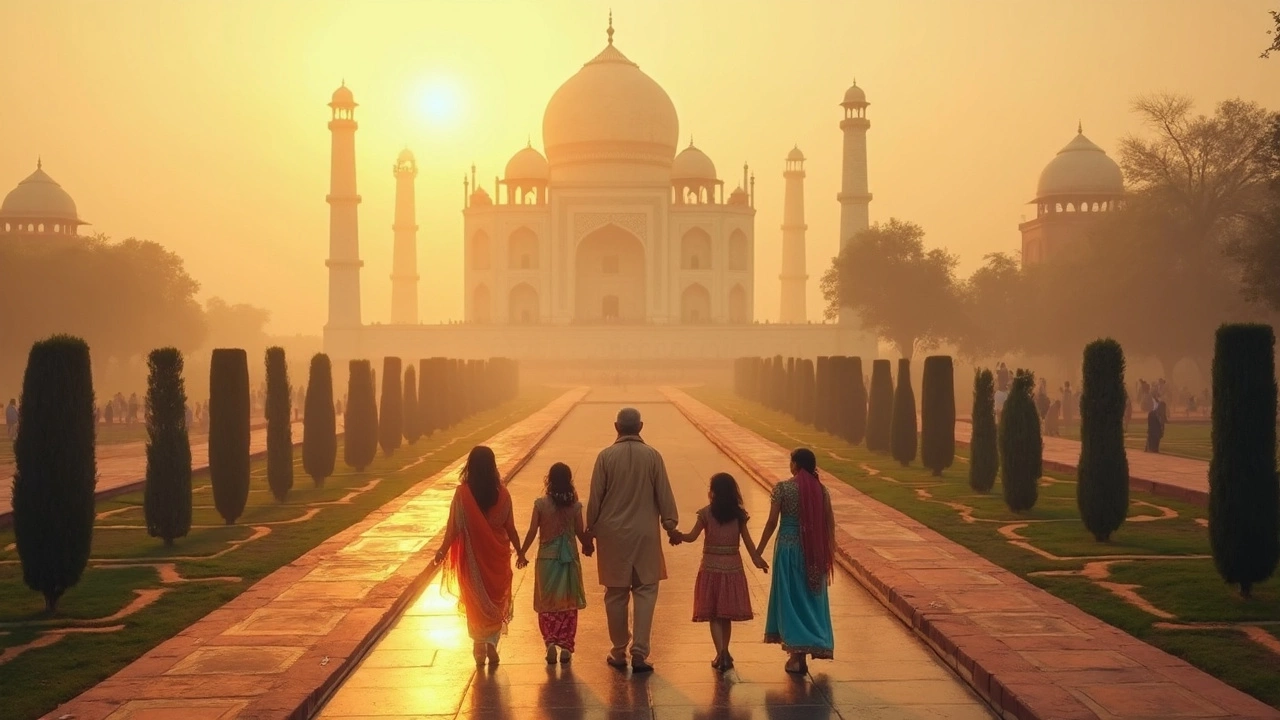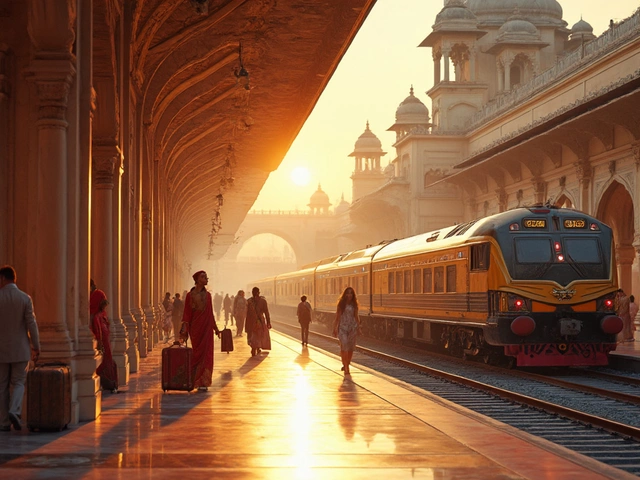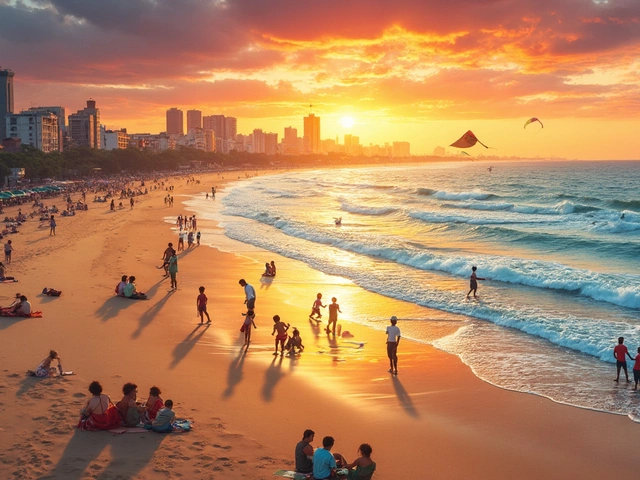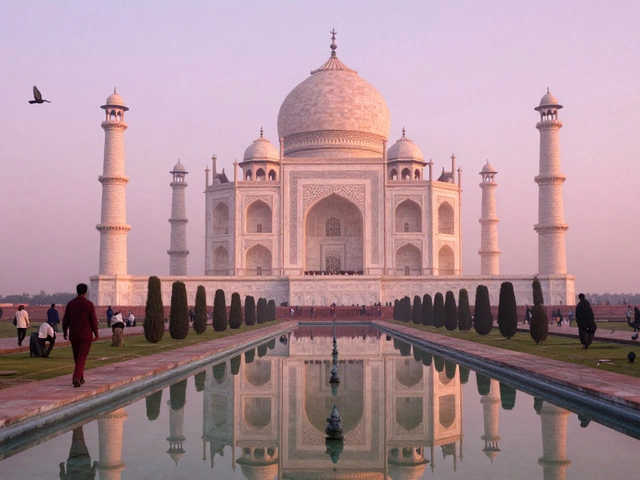Ever walked through an old fort or temple in India and felt like the walls could talk? These aren’t just piles of stone or photo backdrops for your Instagram. Heritage sites across India—think Taj Mahal, Hampi, or even lesser-known places like the Bhimbetka rock shelters—hold centuries of stories, struggles, and breakthroughs.
Here’s the thing: saving these sites isn’t just about nostalgia. It’s about holding on to clues about how people built cities, handled big problems, or just made art that blows your mind. For me and my daughter Liora, every trip to a heritage site turns into a kind of treasure hunt—we always come home with new stories and a fresh perspective on being Indian.
But here’s the catch. As more people flock to these places, many sites are getting damaged, and some are barely holding on. Why does this matter to you? Because when a heritage site disappears, it takes local jobs and creative ideas with it, and we lose a chance to teach our kids where they really come from.
Stick around to find smart ways to experience and protect these sites—no lecture, just real, practical tips you can use the next time you’re planning a trip or talking about history with your family.
- India’s Rich Heritage at a Glance
- Why Heritage Sites Go Beyond Tourist Spots
- How These Sites Shape Indian Identity
- The Real-World Impact: Jobs, Tourism, and Education
- Simple Ways to Experience Heritage with Family
- Everyday Steps to Protect and Appreciate Our Heritage
India’s Rich Heritage at a Glance
If you really want to see what makes India stand out in the world, just check out its huge list of heritage sites. As of 2025, India has 42 UNESCO World Heritage Sites. That means only a handful of countries have more globally recognized treasures to their name.
These aren’t just famous names like the heritage sites India that everybody hears about. Sure, the Taj Mahal gets all the spotlight, but there’s so much more: ancient Buddhist caves at Ajanta and Ellora, the wild jungles of Kaziranga, sun temples, forts, palaces, and even entire cities like Jaipur. Every corner of the country brings something different to the table—religion, art, science, even street design.
To help you wrap your head around just how diverse and old these sites are, here are some quick stats:
| Type of Site | Number in India | Oldest Example |
|---|---|---|
| Cultural | 34 | Ajanta Caves (2nd century BCE) |
| Natural | 7 | Kaziranga National Park |
| Mixed | 1 | Khangchendzonga National Park |
Even UNESCO seems impressed. Back in 2023, when Santiniketan—the home of Nobel laureate Rabindranath Tagore—got added to the list, Director-General Audrey Azoulay said:
"India’s heritage sites tell stories of creativity and diverse knowledge systems. They show us the value of tolerance, sharing, and respect."
The mix of different styles and eras at these sites is actually pretty rare anywhere else on the planet. You can walk from a thousand-year-old temple to a Mughal-era fort, then straight into a city built for modern times, all in one trip.
If you want to see what kind of impact all these sites have, they don’t just teach us history—they’ve helped boost tourism like crazy. Tourism brought in over $30 billion to India’s economy in 2023, and a big chunk of that came from folks eager to see its heritage spots.
Why Heritage Sites Go Beyond Tourist Spots
Heritage sites in India are way more than photo ops or quick tourist getaways. Each one has a real story—take the heritage sites India are famous for, like the Ajanta Caves. The paintings there date back to the 2nd century BCE, showing how people lived, prayed, and thought more than 2,000 years ago. That’s stuff you just won’t find in textbooks.
These sites often double as living classrooms. Ever wondered why Jantar Mantar in Jaipur was built? It’s not just some random pile of stones; it’s a group of astronomical instruments from the 18th century. School trips here suddenly make math and science a lot less boring—my daughter Liora actually remembered how sundials work just by seeing one in person.
And then there’s the local community angle. Craft workers, guides, and food vendors around places like Hampi or Khajuraho all rely on this daily flow of visitors. According to the Ministry of Tourism, over 8 million foreign tourists visited Indian heritage sites in 2023, boosting the local economy by billions of rupees. But it’s not just about money; it’s about keeping old traditions and crafts alive, from block printing in Rajasthan to Chola bronze casting in Tamil Nadu.
- Heritage sites provide clues to old technology—think stepwells designed to fight drought long before modern plumbing.
- Many religious sites like Varanasi or Bodh Gaya are still used as places of worship today, keeping old rituals alive in the modern world.
- Conservation projects often teach new skills to local youth—there’s a UNESCO program in Hampi that trains young people to be expert site guides and stone conservators.
Here’s a look at how some top heritage sites go beyond just pulling in crowds:
| Site | Main Role Beyond Tourism | Fun Fact |
|---|---|---|
| Qutub Minar, Delhi | Architectural wonder, local history lessons | World's tallest brick minaret |
| Mahabalipuram, Tamil Nadu | Supports stone carving trade | UNESCO site since 1984 |
| Sanchi Stupa, Madhya Pradesh | Buddhist pilgrimage site | Oldest stone structure in India |
The big picture? These places are living, breathing bridges between the past and today. When people treat them as more than just spots to tick off a list, they unlock all kinds of ways to connect—from jobs to traditions to hands-on learning.
How These Sites Shape Indian Identity
It’s honestly wild how much you can learn about what it means to be Indian by just walking through a heritage site. Each place has real stories packed into its walls—stories about empires, artists, rebels, and regular people shaping the country’s path. For example, the Ajanta and Ellora caves in Maharashtra aren’t just old rock carvings. They show how India has always welcomed different faiths: Buddhism, Hinduism, and Jainism all come together in one spot. When Liora saw these, she kept asking why so many stories lived in one cave. It makes you think about how our diversity isn’t new—it goes way back.
Goa’s churches and forts show off just how massive the mix is: a dash of Portuguese influence layered onto the Indian way of doing things. And then there’s the Red Fort in Delhi—where the Prime Minister hoists the national flag every Independence Day. It turns an old monument into a living part of today’s India.
These heritage sites India keeps safe are like open-air textbooks. They tell the real story behind our traditions, food, languages, and even daily routines. If you look at stepwells like Rani ki Vav in Gujarat, you see how ancient engineers dealt with water shortages. That kind of ingenuity shapes the way we think today, whether it's DIY projects at home or facing big community challenges.
For a lot of families, these sites are how grandparents pass down memories that aren’t in school books. When you stand inside a place like Sarnath, where Buddha gave his first sermon, the stories suddenly feel real, personal, and relevant—not just something far away or out of reach.
Basically, our heritage sites are shared reminders of what makes Indian identity unique. They connect the past to the present in a way textbooks never really can.
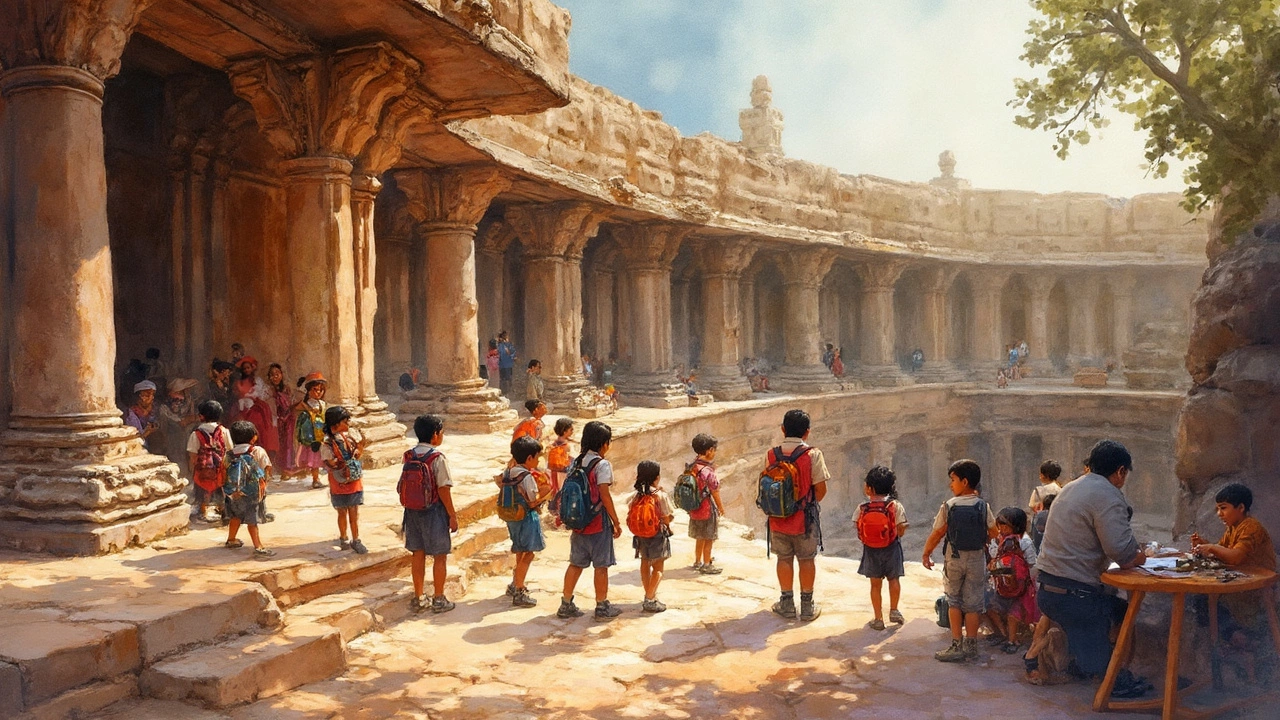
The Real-World Impact: Jobs, Tourism, and Education
When you look at heritage sites India isn’t just showing off old stones and stories. These places straight-up power local economies, put food on the table, and give a lot of folks reasons to take pride in their jobs. For example, the Taj Mahal draws in close to 7 million people a year. That means tour guides, rickshaw drivers, crafts vendors, and nearby hotels all get steady work from tourists who show up, rain or shine.
Check out these numbers—talk about an economic engine:
| Heritage Site | Annual Visitors (approx.) | Jobs Supported |
|---|---|---|
| Taj Mahal, Agra | 7 million | Over 50,000 |
| Qutub Minar, Delhi | 3 million | 20,000 |
| Mysore Palace, Karnataka | 3.5 million | 25,000 |
And it’s not just about money. Schools use these sites for hands-on learning—think history lessons that come alive. My daughter Liora’s class once visited Humayun’s Tomb and suddenly, dry textbook facts turned into stories and characters they could picture. Those visits beat any slideshow or video.
Tourism linked to heritage also sparks local pride. Cities like Jaipur don’t just host tourists—they dust off old crafts, food, and music, so visitors actually get a taste of living culture. Plus, funds from entrance tickets often circle back to help fix up and protect the places you’re visiting.
- Local artists and craftspeople sell their work or do workshops near sites.
- Universities run field trips, research, and restoration projects with students.
- Many sites now offer volunteer programs, so you can get involved fixing trails or running awareness tours.
Even if you’re planning a casual weekend trip, your ticket and snack stop are keeping a whole ecosystem running. So, every visit matters a lot more than you’d think.
Simple Ways to Experience Heritage with Family
Want to turn a regular outing into something epic for you and the kids? Visiting heritage sites India isn’t about ticking places off a tourist list. It’s about digging into real stories, tasting local food, and even learning a thing or two you never picked up in school. Plus, these family adventures make history stick way better than textbooks.
Here are some hassle-free and fun ways to make the most of your time at heritage sites:
- Choose Less-Crowded Spots Sometimes: Everyone rushes to big sites like the Taj Mahal. Try the Sun Temple at Konark or the ancient ruins at Hampi for smaller crowds but loads of wow moments. These places are often more interactive and have guides who love to share cool facts.
- Use Guided Tours or Audio Guides: Most top Indian heritage sites now offer audio guides in different languages. Some even have kid-friendly versions (the one at Jaipur’s City Palace is especially good for families). These guides help kids follow stories without getting bored.
- Plan Around Festivals: Head to a site during a local festival or fair, and you’ll see even old ruins come alive. For example, Khajuraho organizes its classical dance festival every February, blending ancient settings with modern fun.
- Pack a DIY Heritage Kit: Bring sketchbooks, colored pencils, or instant cameras. Challenge the kids to sketch a temple statue or take a shot of their favorite carving. This keeps them curious and engaged.
- Eat Local Food: Skip the packed lunches and try food stalls outside heritage complexes—like piping hot kachoris at Fatehpur Sikri or masala chai at Mahabalipuram. Food is one of the easiest ways to experience the living culture tied to these spots.
If you’re curious how many people do this, check out the numbers:
| Heritage Site | Annual Family Visitors (Estimated) | Audio Guide Available |
|---|---|---|
| Taj Mahal | Over 1 million | Yes |
| Hampi | Nearly 200,000 | Yes |
| Qutub Minar | Approx. 800,000 | Yes |
| Konark Sun Temple | Approx. 350,000 | Yes |
Lastly, keep things flexible and let the kids lead sometimes. If Liora wants to spend half an hour just staring at the stone elephants at Elephanta Caves, I roll with it—you never know what memory will stick the longest.
Everyday Steps to Protect and Appreciate Our Heritage
You don’t need to be an archaeologist or a government official to help keep heritage sites India alive. Most of us just need a few simple habits next time we visit—or even when talking about these places at home. The small stuff adds up. Believe me, I’ve seen the difference myself when families pitch in.
Let’s start with what the experts say. UNESCO, which looks after famous spots like the Taj Mahal and Qutub Minar, has stressed that “the active involvement of local communities and visitors is vital to the long-term preservation of heritage sites.” We all play a part, not just the authorities.
“Protection is not a job that can be left to the experts. Every visitor can make choices that matter, from respecting the site to spreading awareness in their networks.” – Indian National Trust for Art and Cultural Heritage (INTACH)
Want to be one of those people making a real difference? Try this straightforward checklist the next time you plan a visit or talk about Indian heritage:
- Follow the rules at every site—don’t climb, touch, or scribble on those ancient walls, no matter how tempting it is to leave your mark.
- Support local guides—they often have stories and facts you won’t find online, and your fee helps their community too.
- Carry your own water bottle and bags to avoid adding more plastic waste to already stressed historic locations.
- Encourage your kids, friends, or anyone new to these places to respect boundaries and treat everything with care.
- Post about your visits on social media, but always include a tip on conservation or proper etiquette. People will pay more attention to real human experiences than official warnings.
- Donate to heritage foundations, even if it’s just a small amount. Many amazing restoration projects in India get off the ground with normal people pooling resources.
Let’s look at some numbers for a quick reality check. Here’s a snapshot I pulled together from current heritage and tourism studies:
| Action | Impact Stat (2024 Data) |
|---|---|
| Proper waste disposal | Reduces clean-up costs at popular heritage sites by over 30% |
| Choosing guided tours | Boosts local employment in heritage zones by up to 15% |
| School heritage clubs | Increases student civic engagement by nearly 40% |
One last idea: if you live near a historic spot—could be a little-known stepwell or even a centuries-old banyan tree—get involved with local walks or clean-ups. It brings the idea of ‘heritage’ down to your block, not just the fancy sites seen in travel magazines.
When everyone chips in, from little kids to grandparents, Indian heritage doesn’t just get preserved. It starts living inside us, one good habit at a time.
